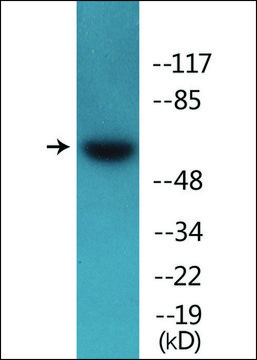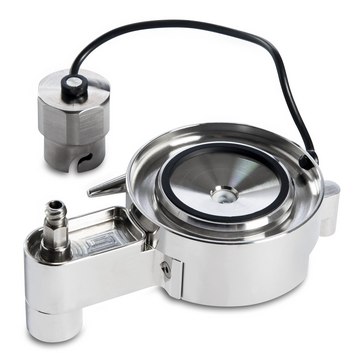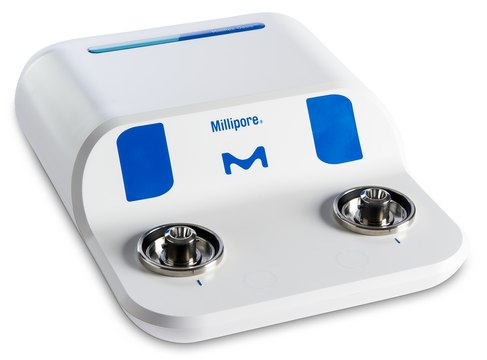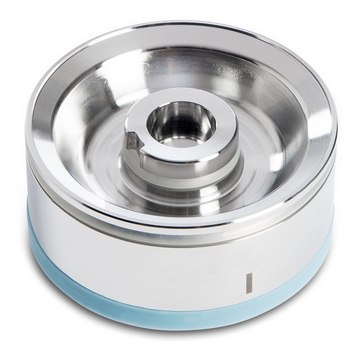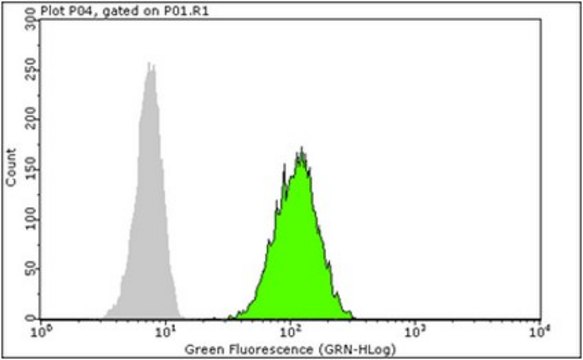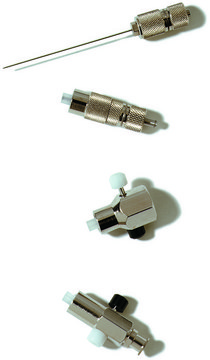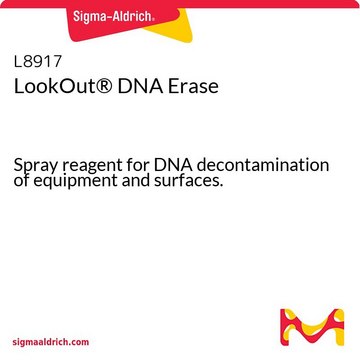推荐产品
一般描述
v-Src is the product of the Rous sarcoma virus (RSV) oncogene, and functions as a non-receptor tyrosine kinase belonging to the family of Src proteins. Srcs are typically activated by dimerized cell surface receptors such as integrins, receptor tyrosine kinases, and cytokine receptors. Activated Src kinases phosphorylate the cytoplasmic domains of these receptors enabling interaction between these receptors and their downstream effector molecules. Src proteins are involved in many cellular processs such as apoptosis, immunity, gene expression, cell adhesion, cell migration, and cell transformation. Previous studies have reported that v-Src plays an important role in tumorigenesis.
免疫原
Recombinant protein corresponding to purified pp60src from bacterial recombinants which direct the synthesis of v-Src.
应用
Anti-v-Src Antibody, clone 327 detects level of v-Src & has been published & validated for use in Western Blotting.
Research Category
Signaling
Signaling
Research Sub Category
Immunological Signaling
Immunological Signaling
质量
Evaluated by Western Blot in NIH/3T3 cell lysate.
Western Blot Analysis: 0.1 µg/mL of this antibody detected v-Src in 10 µg of NIH/3T3 cell lysate.
Western Blot Analysis: 0.1 µg/mL of this antibody detected v-Src in 10 µg of NIH/3T3 cell lysate.
目标描述
~60 kDa observed
外形
Protein G Purified
Format: Purified
Purified mouse monoclonal IgG1κ in buffer containing 0.1 M Tris-Glycine (pH 7.4), 150 mM NaCl with 0.05% sodium azide.
储存及稳定性
Stable for 1 year at 2-8°C from date of receipt.
分析说明
Control
NIH/3T3 cell lysate
NIH/3T3 cell lysate
其他说明
Concentration: Please refer to the Certificate of Analysis for the lot-specific concentration.
免责声明
Unless otherwise stated in our catalog or other company documentation accompanying the product(s), our products are intended for research use only and are not to be used for any other purpose, which includes but is not limited to, unauthorized commercial uses, in vitro diagnostic uses, ex vivo or in vivo therapeutic uses or any type of consumption or application to humans or animals.
未找到合适的产品?
试试我们的产品选型工具.
储存分类代码
12 - Non Combustible Liquids
WGK
WGK 1
闪点(°F)
Not applicable
闪点(°C)
Not applicable
Gabriella Castoria et al.
PloS one, 8(10), e76899-e76899 (2013-10-17)
Hormones and growth factors influence the proliferation and invasiveness of human mesenchymal tumors. The highly aggressive human fibrosarcoma HT1080 cell line harbors classical androgen receptor (AR) that responds to androgens triggering cell migration in the absence of significant mitogenesis. As
Matthew H Herynk et al.
Molecular cancer therapeutics, 5(12), 3023-3031 (2006-12-19)
It has long been appreciated that estrogenic signaling contributes to breast cancer progression. c-Src is also required for a number of processes involved in tumor progression and metastasis. We have previously identified the K303R mutant estrogen receptor alpha (ERalpha) that
Dimerization in vivo and inhibition of the nonreceptor form of protein tyrosine phosphatase epsilon.
Hila Toledano-Katchalski et al.
Molecular and cellular biology, 23(15), 5460-5471 (2003-07-16)
cyt-PTP epsilon is a naturally occurring nonreceptor form of the receptor-type protein tyrosine phosphatase (PTP) epsilon. As such, cyt-PTP epsilon enables analysis of phosphatase regulation in the absence of extracellular domains, which participate in dimerization and inactivation of the receptor-type
Eynat Finkelshtein et al.
Molecular biology of the cell, 25(11), 1808-1818 (2014-04-04)
Female mice lacking protein tyrosine phosphatase ε (PTP ε) are mildly osteopetrotic. Osteoclasts from these mice resorb bone matrix poorly, and the structure, stability, and cellular organization of their podosomal adhesion structures are abnormal. Here we compare the role of
Lilian Varricchio et al.
Molecular cancer research : MCR, 5(11), 1213-1221 (2007-11-21)
This report offers direct evidence that association of the estradiol receptor (ER) with Src triggered by steroid agonists or growth factors controls breast and prostate cancer cell growth. This association is abolished in whole cells and in vitro by a
我们的科学家团队拥有各种研究领域经验,包括生命科学、材料科学、化学合成、色谱、分析及许多其他领域.
联系技术服务部门